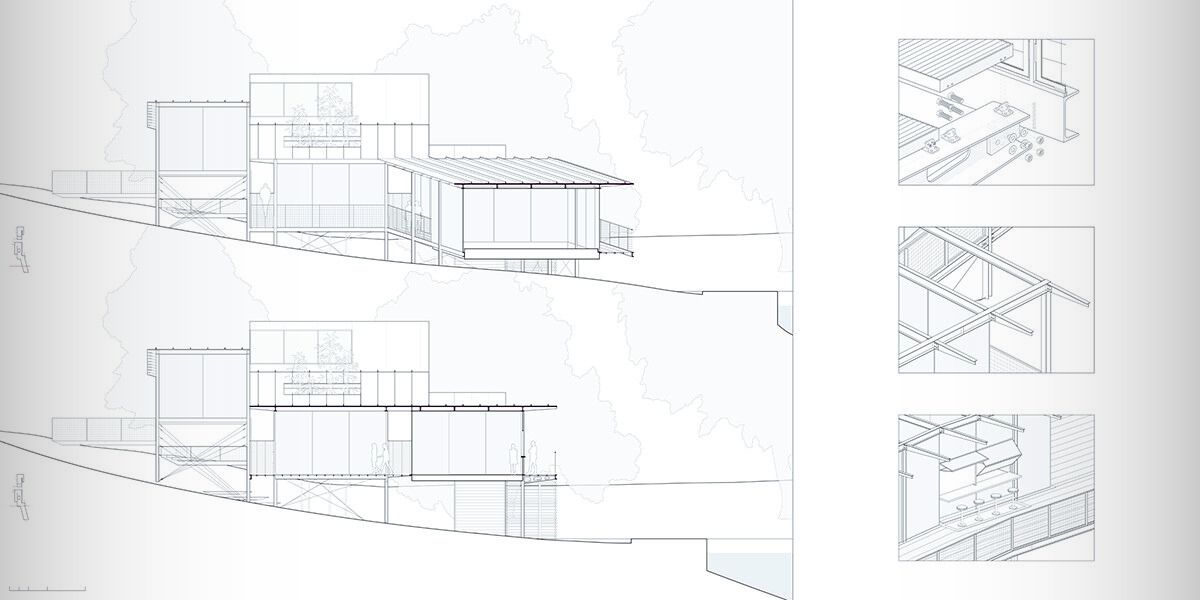Photo Credit: T.R.E.P.I.C LLC
At T.R.E.P.I.C LLC, we’ve observed a significant upswing in healthcare facility construction requests, notably in the development of assisted living homes. Responding to the growing interest among prospective investors and industry entrepreneurs, we’ve prepared this article to provide vital insights into compliance and regulatory factors that must be considered when venturing into an assisted living facility construction project.
1. Licensure and Inspection:
One of the initial steps in constructing an assisted living facility is obtaining the necessary licensure and undergoing rigorous inspections. Compliance with state and federal regulations is non-negotiable, and these requirements are typically overseen by your state’s department of health and human services. Before and after construction, you’ll need to obtain licenses and pass comprehensive inspections to ensure the safety and well-being of your future residents. Don’t forget to consult your local fire marshal and other relevant authorities to understand your jurisdiction’s specific construction requirements, thus avoiding any unforeseen surprises.
2. Zoning Considerations:
Each municipality has its unique zoning requirements, and your assisted living facility must be situated in areas zoned for such use. Before embarking on construction, engage with your local zoning office to ascertain your project’s compliance with these regulations. While zoning constraints may not be as strict in Houston, it’s vital to investigate whether your chosen location is subject to Homeowners Association (HOA) or deed restrictions, and if so, initiate discussions with the HOA. legally, They are not supposed to deny your plans, However, some HOAs have ways to complicate the process. Being well-informed is the key to a smooth project.
3. Environmental Permits:
Construction activities, such as demolition, wastewater disposal, and other environmental considerations, may necessitate permits from your local environmental agency. Ensure you’re compliant with these regulations to prevent any legal complications.

4. Accessibility Standards:
To accommodate people with disabilities, your facility must adhere to the Americans with Disabilities Act (ADA) and other accessibility requirements. Every aspect of your construction, from the building’s design to its infrastructure, must be accessible. To navigate this intricate aspect, it’s highly recommended to consult an experienced construction team. At T.R.E.P.I.C Construction, our certified in-house architects and engineers boast years of expertise in healthcare construction, offering invaluable insights to guarantee full compliance.
5. Fire Safety Compliance:
Fire safety requirements play a critical role in securing your certificate of occupancy. Assisted living homes must adhere to specific fire safety standards, including the installation of fire alarms, sprinkler systems, emergency exit signs, and kitchen hood suppression systems. Regular fire drills are also essential to ensure preparedness. Consulting with your local authorities, particularly the county fire marshal, is crucial to understanding and meeting the local fire safety requirements.
6. Qualified Professionals:
Working with qualified professionals who specialize in assisted living home construction is indispensable. These experts possess the knowledge and experience necessary to ensure your project complies with all applicable laws and regulations. At T.R.E.P.I.C Construction, we prioritize the comprehensive compliance of our clients with both state and local regulations. We offer free pre construction consultations to streamline the process and keep up-to-date with the ever-evolving compliance landscape. Given the frequent changes in regulations, it’s paramount to collaborate with a construction team that stays abreast of the latest updates.
7. Budgetary Planning:
Constructing an assisted living home is a substantial financial undertaking. Developing a meticulously detailed budget is vital, encompassing all expected construction costs. Drawing from our past projects, T.R.E.P.I.C estimates that converting an existing residential home to an assisted living facility in the Houston market would cost a minimum of $69 per square foot (including design and construction). In comparison, a ground-up construction project would incur a minimum cost of $150 per square foot. However, these figures are specific to the Houston market, and it’s imperative to research pricing in your local area to align with your budgetary planning.

8. Flexibility:
In the realm of construction projects, flexibility is paramount. Unforeseen challenges and adjustments often arise. Set aside at least 10% of the total budget for contingency.
Constructing an assisted living facility is a substantial undertaking that demands thorough preparation and meticulous attention to detail. The considerations outlined in this article, ranging from market research to regulatory compliance and resource management, serve as a robust foundation for your construction project. T.R.E.P.I.C Construction is well-versed in the intricacies of healthcare facility construction and stands ready to guide you in realizing your vision. Armed with these critical insights, you can embark on your assisted living construction project with unwavering confidence, knowing that you are contributing to the betterment of your community and the well-being of its seniors.








